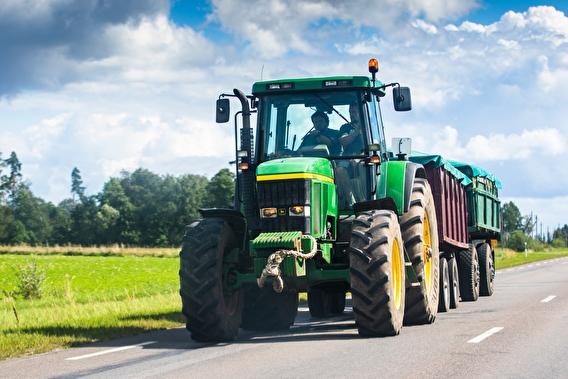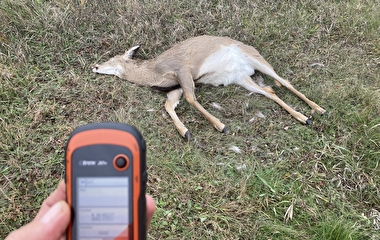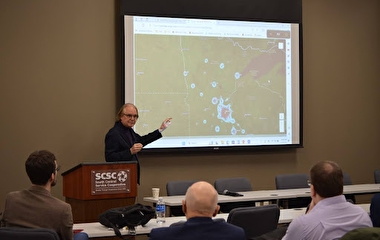
A U of M study of farm vehicle safety on rural roads identified factors—such as crop type and number of vehicles operated—that can help predict the likelihood of a farm’s vehicles being involved in a crash on a public road.
According to the study, farm vehicle crashes are a major safety concern on rural roads. Farm equipment is generally large and moves much slower than the average speed of travel. The resulting crashes usually involve passenger vehicles and have a higher-than-average rate of injury or fatality.
A fact sheet from the National Highway Traffic Safety Administration reports that only 30 percent of the total vehicle-miles traveled in 2017 were in rural areas, yet 46 percent of all traffic fatalities occurred on rural roads.
The researchers noted that this problem is generally only studied from the perspective of passenger vehicles using motor vehicle crash reports. “Case-only studies do not examine how farms or their operational characteristics influence the probability of a crash,” says Marizen Ramirez, associate dean for research at the U of M School of Public Health and the project’s principal investigator.
To bridge this knowledge gap, the researchers conducted surveys of 1,282 farms across nine Midwest states. They asked farmers if any of their equipment had ever been involved in a crash on a public road. If yes, they followed this up by asking about factors such as the time of year, the size of the farm, the horsepower and purpose of the equipment involved, and whether the farm cultivated crops or livestock.
Using these surveys, Matt McFalls, a PhD student in Environmental Health Sciences, worked with Ramirez and her team to compile the data into a predictive model. The model was able to determine which factors showed the highest correlation with a history of farm equipment crashes.
The surveys found that a relatively low number of farms have ever experienced farm equipment crashes overall—7.6 percent of the 1,282 farms. Of those crashes, the predictive model found a higher crash probability among farms that were larger (241 acres or more), racked up more driving (1,430 miles per year or more), and had more vehicles out on the road (20 vehicles or more).
The model also found that June through August is the most common time of year for crashes, and crop farms are more likely to experience crashes than livestock farms even when controlling for size.
But this model has its limits, McFalls says. For one, it determines correlation but not causation. Crop farming might be more crash-prone than livestock farming because the equipment tends to be larger, slower, and more irregularly shaped, but more studies will be needed to determine that this is indeed the actual cause-effect relationship.
This data was also possibly biased by the memory of the farmers reporting the information, McFalls adds, and the data may have not captured potentially important crash factors such as roadway usage and surrounding motor vehicle policies at the time of the crash.
This study does, however, provide a good jumping-off point for any future studies, the researchers say. It also provides farmers and rural communities with a tool that can be used to inform crash prevention and outreach efforts.
The study was funded by the National Institute for Occupational Safety and Health and supported by the Great Plains Center for Agricultural Safety. The authors were a collaborative of researchers from the U of M, the University of Iowa, and Ohio State University.
Writer: Sophia Koch


